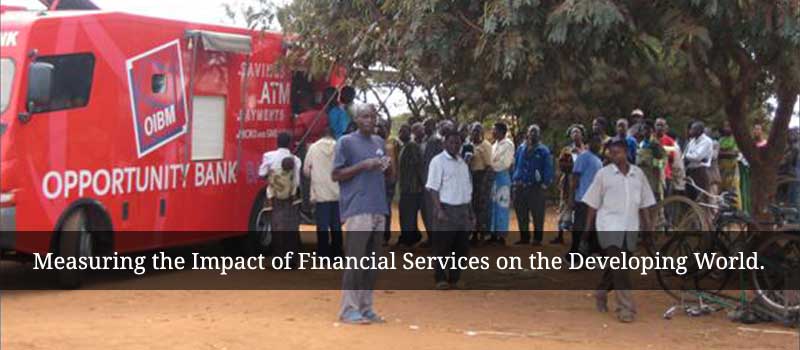Intense Information Campaign Increases Microfinance Outreach in Rural Malawi
"At the beginning, it was so difficult to explain about OIBM to someone who doesn't even know what a bank is," said a Field Based Promotional Assistant (FBPA) hired for intense information campaign. "It's hardest to convince those who are illiterate — even those with money — because it's a new method of saving for them. They simply don't know about banking and thought it will rob their cash," said another FBPA. But as the months rolled by, continual visits by FBPAs to the villages with information appeared to pay off in gaining their trust. "Now, it's not difficult at all. The bank is well known, and more and more people are interested in joining" said a FBPA. Beginning August 2007, the Opportunity International Bank of Malawi (OIBM), a savings led institution, started servicing rural central Malawi with a mobile bank. The bank on wheels was funded by the Bill & Melinda Gates Foundation (BMGF), and was fitted with the latest information technology mechanisms to provide rural Malawians in three districts in central Malawi — Lilongwe, Mchinji and Dedza — with increased access to financial services.
When OIBM started its mobile bank operations in August 2007, competition among financial service providers was growing and many financial institutions, including OIBM, were struggling to capture a solid market share. By December 31, 2007, the OIBM mobile van only serviced 490 clients along its six mobile van service points. Major constraints to outreach included patchy information flows that were not consistent, resulting in out dated information and uneven knowledge distribution of the details of financial products and providers. Financial institutions, including OIBM, only used mass media through radio and town meetings for disseminating information on their services. In order to increase its outreach and obtain a larger market share, OIBM, with the help of the IRIS Center at the University of Maryland, developed an alternative method to the mass media marketing: an intense information campaign, akin to "personal marketing" or "relationship marketing." This approach helped to deliver some specific information and also the information provided through the mass media to clients' door steps.
The IRIS Center conducted a study based on a randomized control trial (RCT) design to examine the effectiveness of intense information campaign on outreach in 118 randomly selected clusters drawn from the three districts serviced by the OIBM mobile van. Among these 118 clusters, a subset of a randomly selected 59 clusters (treatment) covering about 14,750 households in 280 villages received the intense information and the mass media campaigns. The other 59 similar clusters (control), covering about 14,588 households in 325 villages, only received mass media campaign. The control clusters are similar to the treatment clusters in population and distance from trading and financial centers, but are located at least 4 km away in every direction from the treatment clusters to avoid the dissemination of the information from the treatment areas into the control areas.
The intense marketing campaign started in treatment clusters in April 2008 and lasted until December 2009. Information was disseminated through 18 field based promotional assistants (FBPAs) placed in treatment areas that were trained and paid by OIBM. The FBPAs used colorful fliers, posters, t-shirts and client referral cards to provide information on the time and location of the mobile van, terms and conditions of the loan and savings products, and ways to access them. Mass media campaigns only provided broad information on products and services offered at OIBM.
In order to gather data on outreach, an electronic tracking system, embedded into the regular management information systems (MIS) of OIBM, was developed to capture details of new client registrations in all of the six mobile bank calling points. Data were collected between April 2008 to May 2009 from all new clients registered by OIBM at the mobile van stops on opening date of the account, place of residence (village name, traditional authority area name, district), and gender of the account holder. In addition, IRIS also conducted a survey among 2,006 households randomly chosen from the same 118 clusters before and after the intense information campaign in order to understand the outreach of the campaign. Also, IRIS held 192 key informant interviews in the same clusters to assess the spill-over effects of OIBM intense information campaign on the outreach by other similar formal providers who compete for the same market share. Interviews were also carried out with six FBPAs to understand the process.




